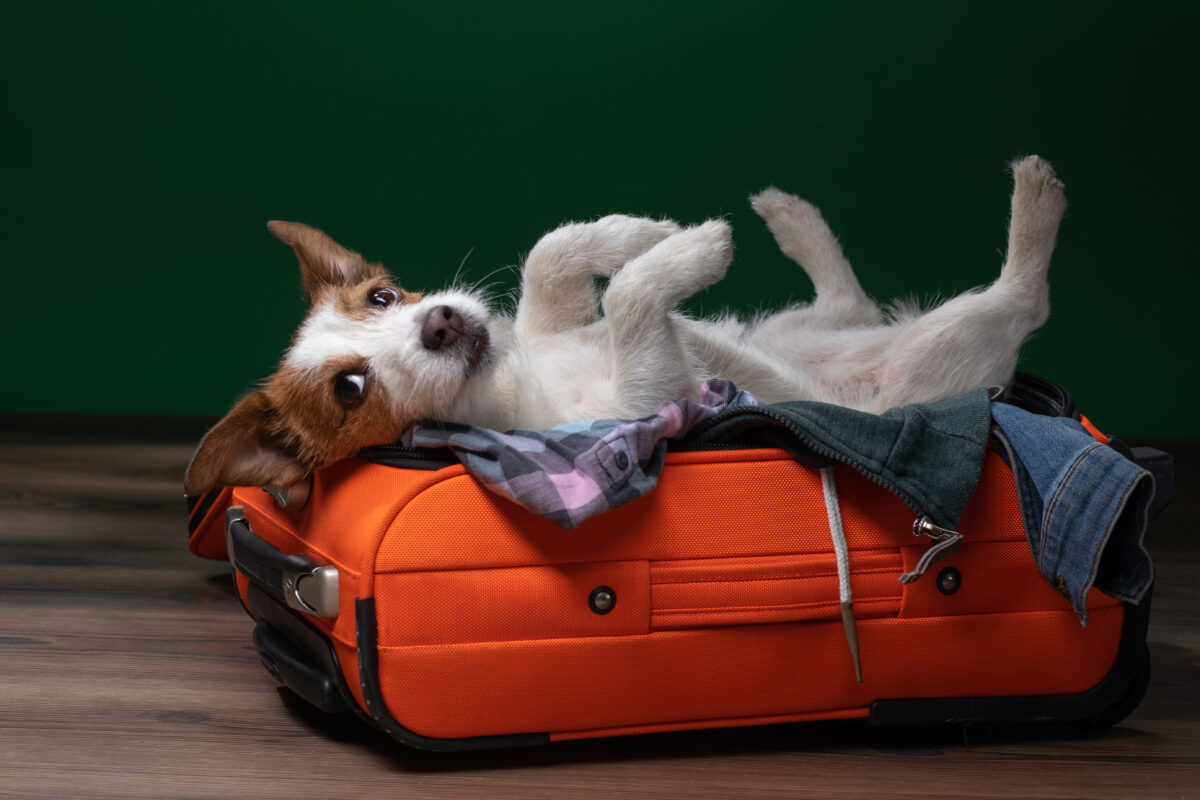Adopting my first small dog – a 9-pound Poodle named Peach – brought many pleasant surprises, including the chance to travel with a dog on an airplane.
When I bought our first plane tickets to visit my parents, I made sure to buy a nonstop flight to keep our travel time as short as possible. Then I got to work teaching her to love her little carrier. I left it open in the living room, frequently leaving treats inside.
Once she started entering the carrier on her own, tail wagging, I tried zipping her in and carrying her into a different room – then giving treats as soon as I unzipped it. Gradually I got her used to spending longer amounts of time aloft in her carrier, holding it in my arms so she didn’t swing at my side.
I also scheduled a visit with her veterinarian to ensure she was healthy enough to fly and up to date on shots. Since some airlines require a health certificate called a Certificate of Veterinary Inspection, I got one just in case someone asked to see it at the airport – and kept her shot records on hand.
Since Peach can be anxious, her veterinarian prescribed medication to help keep her calm on the flight, and we tested it before we traveled to see how she’d react. On the day of our flight, I fed her two hours before we left for the airport so she wouldn’t be uncomfortably full in case of motion sickness, and we had a longer walk beforehand to help her feel relaxed.
On the plane, I checked on Peach frequently while she rested in her carrier under the seat in front of me to make sure she was comfortable; I was definitely the more nervous of the two of us! I had a collapsible bowl and water with me in case she seemed thirsty.
When we arrived in California, I took her outside to potty before retrieving my luggage. Later that day, she was strutting on the beach while we enjoyed our family vacation.
Being fully prepared before flying with a pet is crucial for a positive experience for both our pets and ourselves, according to Nelva Bryant, DVM, airline industry veterinarian and founder of the Facebook group When Pets Fly.
For in-cabin travel, start by choosing a soft-sided carrier that will fit under a seat but still allow your pet to stand up and turn around. It should have ventilation on all sides.
“Your dog needs to be able to move about comfortably in it,” she says, noting that airlines can refuse to allow a pet onto a plane if the dog or cat is just crammed into a carrier without ample space. “You have to really think about your pet.”
She suggests placing a shirt you’ve worn or something else with your scent inside the carrier to help your dog relax. Bring treats and water, and be sure to let your dog relieve herself before travel. Many airports have pet relief areas in terminals.
Dr. Bryant also stressed the need for a health check with your veterinarian prior to travel to make sure it’s safe. Pets with cardiovascular or respiratory diseases might carry too much risk. She advises against sedatives, preferring calming pheromone sprays such as Adaptil.
Research the airline’s requirements, since pet policies are not the same across the board. It’s also important to research pet entry and exit requirements for Hawaii and international destinations with the USDA’s pet travel website.
“Some of the requirements for these destinations can be really advanced,” she cautions. “So research that destination, their entry requirements, and comply. Because if not, mandatory quarantine could happen … they can refuse entry and say, ‘Go back to where you started from.’ That’s a major cost and disappointment. So do your due diligence.”
Americans should also research entry requirements. In July of 2021, the CDC announced a temporary suspension of “dog imports from countries classified as high-risk for rabies” – including U.S.-origin pet dogs returning to the U.S.
As the CDC states: “If you do not follow CDC’s rules, your dog may not be allowed to enter the United States.”
So preparation for air travel includes researching airline and country requirements as well as acclimating our pets to their carriers, checking with our veterinarians for any tips specific to our pet’s needs, and considering whether travel is in our pets’ best interests.
“You want to make sure everything is in order for that pet to travel,” she concludes.
Your efforts to ensure a safe and pleasant travel experience for both you and your dog will be worthwhile once you start making memories on vacation with your furry best friend!
FOR MORE INFORMATION
USDA’s pet travel website: https://www.aphis.usda.gov/aphis/pet-travel
CDC’s pet importation website/list of high-risk rabies countries: https://www.cdc.gov/importation/bringing-an-animal-into-the-united-states/dogs.html
This article was reviewed/edited by board-certified veterinary behaviorist Dr. Kenneth Martin and/or veterinary technician specialist in behavior Debbie Martin, LVT.








